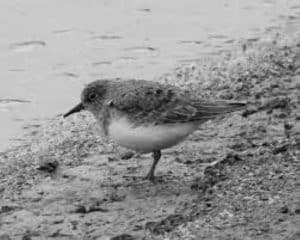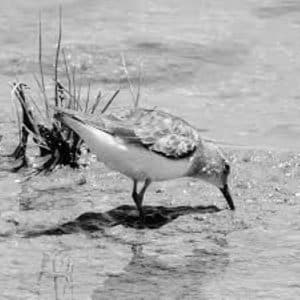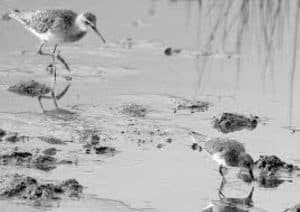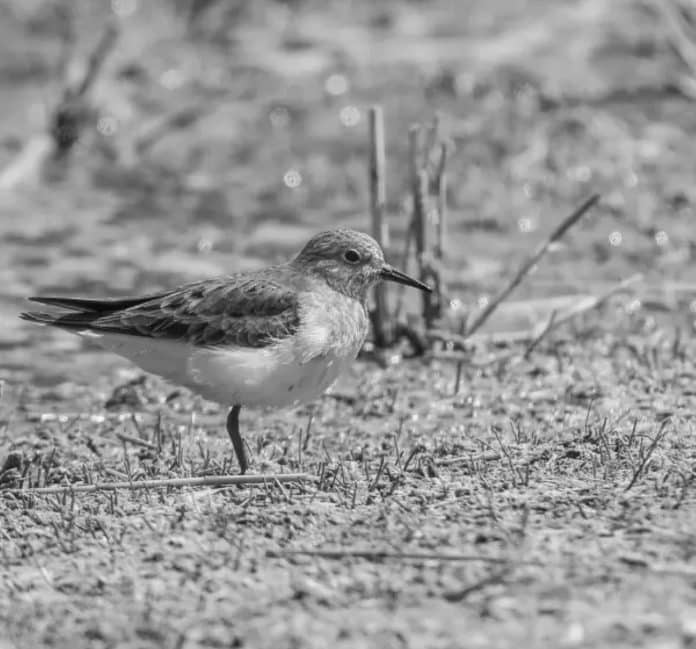Introduction to Temminck’s Stint
Temminck’s Stint in Tanzania is a small bird species that measures approximately 14 cm in length and has a wingspan of about 30 cm. The male and female birds have similar physical features, with a brown and white plumage that provides excellent camouflage in their natural habitat. These birds have a distinctive white eyebrow that extends to the back of their head, and their legs are pale yellow or greenish.
Temminck’s Stint is a migratory bird species that breeds in the northern parts of Europe and Asia and winters in Africa, the Middle East, and the Indian subcontinent. These birds are known for their long-distance migration, and some birds travel up to 8,000 km during their migration.
Habitat and distribution of Temminck’s Stint
Temminck’s Stint prefers to breed in wetland habitats such as marshes, bogs, and tundra. During the winter season, these birds can be found in a variety of habitats, including mudflats, estuaries, and coastal lagoons.
In Tanzania, Temminck’s Stint can be spotted in various locations, including the Serengeti National Park, Kilimanjaro National Park, and Lake Victoria. These birds are highly adaptable and can be observed in different types of wetlands, including rivers, dams, and swamps.
Migration patterns of Temminck’s Stint

Temminck’s Stint is a long-distance migrant that travels from its breeding grounds in the northern hemisphere to its wintering grounds in the southern hemisphere. These birds start their migration in late summer and early autumn and travel to their wintering grounds in Africa, the Middle East, and the Indian subcontinent.
Studies have shown that some Temminck’s Stint birds travel up to 8,000 km during their migration. These birds fly over vast stretches of land and water, crossing the Arabian Sea and the Sahara Desert. The migration of Temminck’s Stint is a remarkable feat of endurance and navigation.
Conservation status of Temminck’s Stint in Tanzania
Temminck’s Stint is a bird species of least concern, according to the International Union for Conservation of Nature (IUCN). This means that the population of this bird species is stable and not currently at risk of extinction.
However, wetlands, which are the natural habitat of Temminck’s Stint, are under threat from human activities such as land use changes and pollution. These threats can impact the availability of food and nesting sites for Temminck’s Stint and other bird species that depend on wetlands.
Research efforts and studies on Temminck’s Stint in Tanzania
Several research efforts have been conducted on Temminck’s Stint in Tanzania, aimed at understanding their habitat use, migration patterns, and population dynamics. These research efforts have contributed to the knowledge of this bird species and its conservation.
For instance, a study conducted in the Serengeti National Park found that Temminck’s Stint was among the most abundant shorebird species during the wet season. The study also revealed that the species preferred shallow water habitats with a high abundance of invertebrates.
Interesting facts about Temminck’s Stint

- Temminck’s Stint is named after Coenraad Jacob Temminck, a Dutch zoologist who lived in the 19th century.
- These birds have a high-pitched trill that sounds like a sewing machine.
- During the breeding season, Temminck’s Stint males perform a display flight, where they fly up and down while giving a high-pitched call.
Best places to spot Temminck’s Stint in Tanzania
Tanzania is home to several wetlands that provide ideal habitats for Temminck’s Stint and other bird species. Some of the best places to spot Temminck’s Stint in Tanzania include:
- Serengeti National Park
- Kilimanjaro National Park
- Lake Victoria
- Arusha National Park
- Rubondo Island National Park
Tips for birdwatching and photographing Temminck’s Stint
Birdwatching and photographing Temminck’s Stint require patience and skill. These birds can be elusive and blend well with their surroundings, making them difficult to spot.
Here are some tips for birdwatching and photographing Temminck’s Stint:
- Use binoculars or a spotting scope to get a closer look at the birds.
- Visit wetlands during the early morning or late evening when the birds are most active.
- Wear clothing that blends well with the surroundings to avoid startling the birds.
- Avoid making loud noises or sudden movements that can scare the birds away.
Volunteer opportunities and birding tours focused on Temminck’s Stint in Tanzania

Several organizations offer volunteer opportunities and birding tours that focus on Temminck’s Stint and other bird species in Tanzania. These opportunities provide a chance to learn more about bird conservation and contribute to the conservation of these birds.
Conclusion: Appreciating and protecting Temminck’s Stint in Tanzania
Temminck’s Stint is a remarkable bird species that travels long distances during its migration and depends on wetlands for its survival. Tanzania is home to several wetlands that provide ideal habitats for this bird species, and it is essential to appreciate and protect these habitats.
By following the tips for birdwatching and photographing Temminck’s Stint and supporting conservation efforts, we can ensure that these birds continue to thrive in Tanzania and beyond.

































